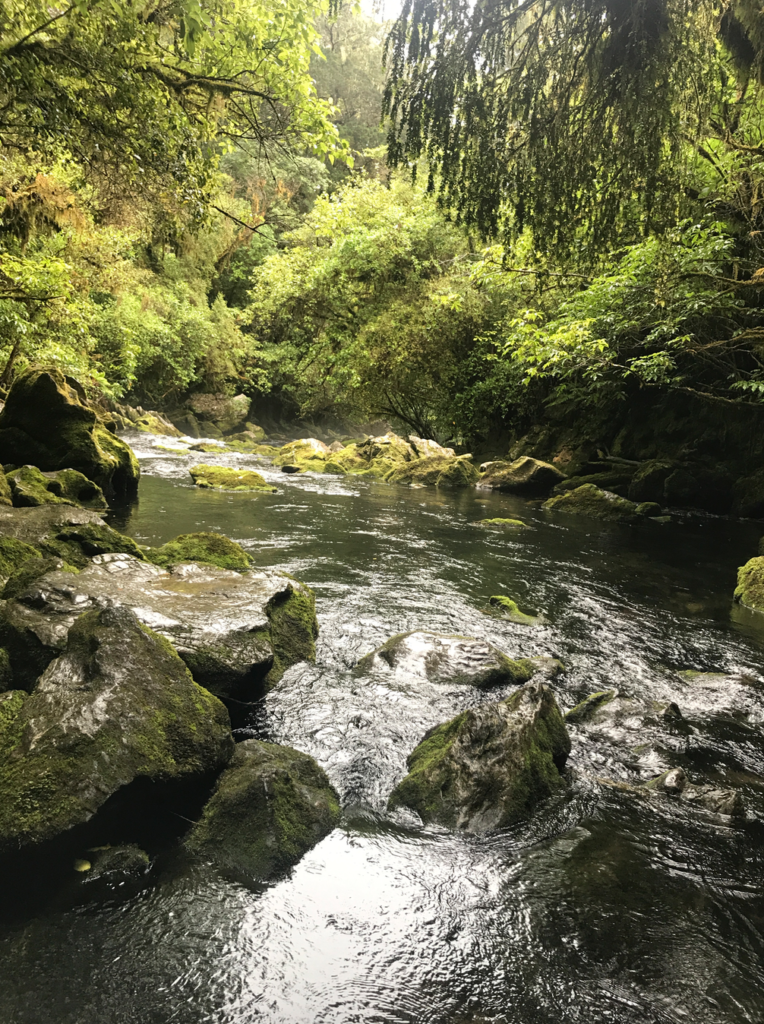The twisted branches of the Pohutakawa tree reach out from the coast as if trying to touch the sea. Its fine red-needled blossoms are a sister to the Lehua flower of the O’hia trees of Hawai’i. Blue skies are brushed with strokes of white, revealing the origins of New Zealand’s Maori name, Aotearoa, land of the long white cloud.
Nearly equivalent in size to the American state of Colorado, with a population of 4.5 million friendly Kiwis, New Zealand’s landscape is as diverse as it is vibrant. From golden sandy bays to towering glaciers, this small country offers landscapes of many kinds.
In the creation myth, the great Polynesian demigod, Maui, used the jawbone of his grandmother to fish up the North Island or Te Ika a Maui (the fish of Maui) from his boat known as the South Island, Te Waka a Maui (the canoe of Maui). This image gives a sense of the geographic sizes of the islands; the North Island, though the smaller of the two, is more populated while the South Island stretches south like a canoe. The North Island is home to six Steiner schools while the South Island has three.
During my visit, I was able to visit seven Waldorf schools, one Camphill community, the Weleda pharmacy and gardens as well as Taruna College, an Anthroposophic training and conference center. Anyone involved with schools knows that the weeks leading up to the winter holiday season is always a hectic time but here in the Southern Hemisphere they are also bringing the school year to an end. Despite being the busiest time of the year for New Zealand schools, I was grateful to be welcomed into each community with warmth and generosity.
I began my journey in Auckland, the largest city in New Zealand. After visiting two schools in and around Auckland, I made my way south to the capital city, Wellington, to see four more schools on the North Island. A four-hour ferry ride took me across the Cook Straight to the South Island where I spent time at two more schools.




